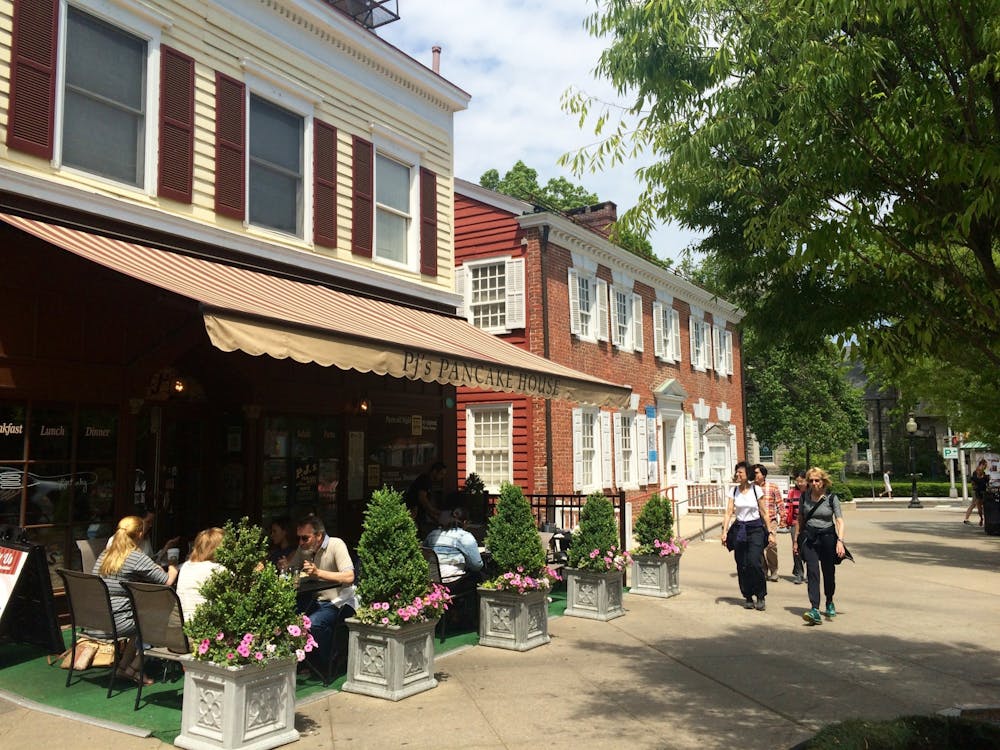Filling all six levels of the spiraling Guggenheim Museum, "Spanish Painting from El Greco to Picasso: Time, Truth and History" takes the viewer on a breathtaking journey through five centuries of Spanish art. Featuring nine artists, the show is comprehensive to the point of being somewhat overwhelming. Yet the exhibit is enchanting and intriguing, providing a sturdy introduction to Spanish art while leaving room for exploration. The art breathes mystery and invites inquiry.
Spanish painting, once defined as the period from El Greco to Francisco de Goya, has expanded to include the 20th century avant-garde movement and extends through Juan Gris, Joan Miro, Salvador Dali and Pablo Picasso. Through Goya's work, it is easy to see continuity in the works across time, but cubism and surrealism introduce a very different aesthetic. As emphasized in the pamphlet that accompanies the exhibition, in including this novel vision of 20th century Spanish artists, the curators hope to unearth a continuity of traditional motifs and themes in these later works, revealing a local flavor still as palpable in Picasso's work as in El Greco's, despite the radical formal changes.
Carmen Gimenez, the curator of 20th century art at the Guggenheim, and Francisco Calvo Serraller, a professor of art history at Universidad Complutense in Madrid, designed the exhibition by breaking it into 15 sections, each dedicated to a theme — Bodegon paintings, Landscapes, Women and the Domestic World, to name a few. The curators saw these themes running through the five centuries of Spanish art represented. In the pamphlet, we are told that the curators' impetus in organizing this exhibit was to highlight "affinities between the art of the old masters and that of the modern era" while challenging "conventional art histories that would seek to separate them."
In reality, such a structure seems to undermine the curators' goal by providing a somewhat disorganized presentation. Rather than revealing and exploring the nuances of tradition, the exhibit relies on cliched pairings that hit the viewer over the head with the way tradition is carried through these five centuries, which ultimately weakens an otherwise poignant display of art.
The organization of the show creates interesting but shallow pairings, juxtaposing early works that express a tormented mysticism with later bold visions of a truly modern aesthetic. While it is certainly thrilling to see a loud Picasso still life from 1908, such as "Still Life with a Skull and a Pitcher," next to a highly refined and polished traditional 17th century Franciso de Zurbara, some subtle gradients in innovation are lost. Continuity is evident only in the subject matter, and the pairings appear to be frivolous, lucky finds, rather than examples of a Spanish tradition. The story of the five centuries of art represented in the exhibition is much more complicated than the paintings' arrangement on the walls might suggest.
After Goya, Spanish artists developed a modern national consciousness that conflicted with the political, social and economic backwardness in Spain. Whether they were forced or willing to leave, many artists emigrated to other parts of Europe, resulting in both a greater appreciation of Spanish art and a canonization of it by art historians. In the artists' works, we can read the conflicting impulses we would expect of artists with great national pride who nonetheless fled a country that was mired in tradition. In the works of these artists, one finds a simultaneous rejection and appropriation of Spanish themes and formal techniques.
Yet the anti-chronological structure of the shows fails to give its viewers a solid foundation from which we can read the tension in the works of art. Not only do the thematic divisions and pairings by subject matter feel cheap, they fail to consider the works in their complexity or to explore the handling of tradition the curators seek to emphasize and to enlarge our understanding of through the show.
Moreover, it seems odd to resort to such an organization in a space like the Guggenheim. The usually difficult layout of the meandering museum would have suited a show that wished to cover such a large period of time quite perfectly. But in this show, the linear trajectory of the museum made it difficult to see a clear definition of each thematic group, as each seeped into the other, unaided by the usual divisions of gallery walls.

In addition, a chronological layout might have made it easier to see the astounding variation in the works of a single artist that challenged preconceived notions of what an artist's work was like, but that was only truly apparent after a second go-around of the exhibit. The range in the works of Dali, of Goya and of Picasso was mind-boggling. It was difficult to believe that so many different aesthetics could be created by one artist.
While the organization of the exhibit, the largest collection of Spanish art ever shown together in New York City, was at best messy and occluded a clear vision of an important body of works, the show was nonetheless fascinating. The canvases themselves broke out of the rubbage, the incredible works hypnotizing the viewer and filling the barren white walls of the Guggenheim museum with true Spanish flavor.








